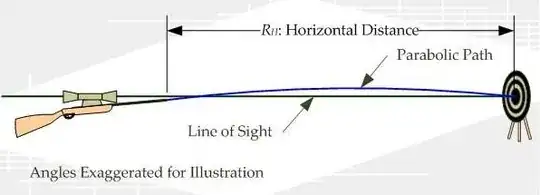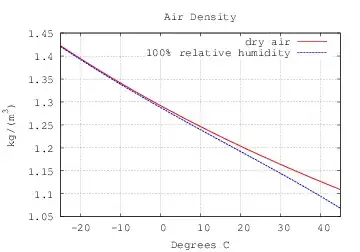Background
Last night, I was reading the FM 23-10 (The U.S. army official field manual for sniper training), and I've noticed that they're potentially teaching snipers incorrect information.
Generally speaking, when we say "impact goes up" it means that the bullet was either somehow made faster or its path was easier, therefore the curve in its ballistic trajectory is smoother. Thus, it will hit higher. When we say impact goes down, we mean the opposite.

For example, atmospheric heat will, loosely speaking, make the air "thinner" and therefore the impact will be higher. Cold weather will do the opposite. This part is correct.
What about humidity?
The sniper can encounter problems if drastic humidity changes occur in his area of operation. Remember, if humidity goes up, impact goes down; if humidity goes down, impact goes up.
They're basically saying that when humidity goes up, then the bullet's travel will be more difficult-> steeper trajectory curve -> lower point of impact.
However, as far as I know, dry air is denser than humid air because air has higher molecular mass than water vapour. In humid air water vapour replaces other gases, thus bringing the whole density down. So, the point of impact should be higher with higher humidity.
So my question is:
All other factors being equal, does humid air pose less resistance to the bullet making the point of impact higher than in dry air?
